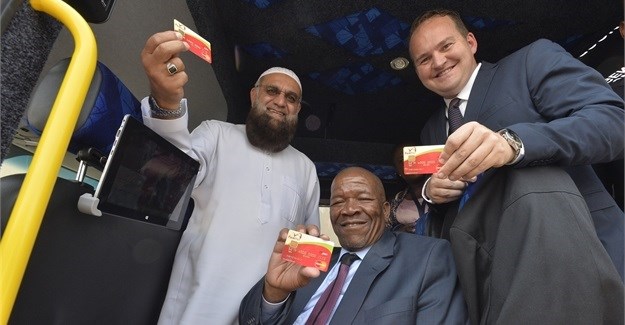Marketing & Media trends
Industry trends
BizTrends Sponsors
Trending
#BizTrends2017: The three hottest trends in transport and logistics

Logistics… winning back the ‘gateway to Africa’ mantle
With over 3,000 kilometres of coastline, and a number of highly-developed shipping ports, South Africa was once the gateway to shipping trade for the entire continent. But more recently, our dominance has been slipping, with newer ports like Namibia's Walvis Bay offering attractive alternatives as they access several important trade corridors into the continent.
The fastest and most effective way for South Africa to improve its logistics industry, and access more of the global shipping market (which transports 90% of international goods), would be to better integrate the systems used by the various logistics parties.
For instance, cargo owners, freight forwarders, logistics operators, and trucking companies could use technology to connect more seamlessly, and improve collaboration at all levels of the value chain. With increased efficiencies, our throughput would increase. So, for professional organisations tasked with evolving our logistics sector, this should be a key priority in 2017, as they look to play a more instrumental role in helping their member organisations.

Added to this, sensor-based technology can be applied to start understanding the bottlenecks in our system, inform operators of problems along particular routes and ensure vehicle and driver safety standards are maintained. Durban has been a pioneer in this area, deploying a dizzying array of sensors, geolocation technology, systems integration, robotics and communication tools, and more. With different stakeholders more organised, more interconnected, the throughput of vessels has dramatically increased – showing just how technology can be used to optimise logistics operations.
Changing the face of public transport
In many of our major urban metros, as well as some of the smaller towns, formalised public transport infrastructure is finally starting to emerge. The kick-start, it seems, was the 2010 World Cup, which stimulated the right conversations, and reminded us of the harsh reality that we had simply not progressed fast enough in this field.
Perhaps the biggest advantage to being ‘slow to develop’ is that we can now integrate the latest technology into our public transport operations, without having to worry about legacy technology.
2017 will see an increased focus on interconnecting the various aspects of public transport technology – starting with the planning systems, the implementation tools, to the scheduling systems which are designed to optimise the way that commuters are taken from A to B, and finally the ticketing systems (including issuing and collecting).

We’ll also see more public transport information being surfaced to consumers in the form of online schedules or apps that adjust themselves in real-time and benefit from geolocation capabilities. To get more urban South Africans to the point where they’re willing to abandon the car and opt for the bus or the train instead, we’ll need to intelligently use digital tools to package tailored information to users – about ticketing, routes and schedules, costs, and so on.
For authorities, increased use of sensors and tracking technology will mean more information that informs where to deploy buses, and where to build new rail routes. Using measurement principles like the Transport Development Index, and philosophies like Transit Oriented Development, Big Data can begin to spur meaningful economic inclusion and development.
Evolving the tolling debate
In Gauteng, as the controversial urban tolling system still hangs in the balance, authorities might explore alternative means to collect tolls. We may see a more nuanced and informed conversation emerging, with various stakeholders starting to tout more efficient ways of collecting toll revenues from motorists. These could range from low-tech solutions like increased fuel taxes to higher-tech options like satellite vehicle tracking and digital payments solutions.
Using satellites, combined with a small chip embedded into the car’s ‘OBD’ port, negates the need for expensive physical infrastructure like highway gantries, and allows authorities to more easily connect one’s local (urban) travel, with longer-distance travelling across toll routes. In fact, satellite tracking has great application in the logistics space as well, as it enables seamless tracking for freight trucks traveling across African borders.











